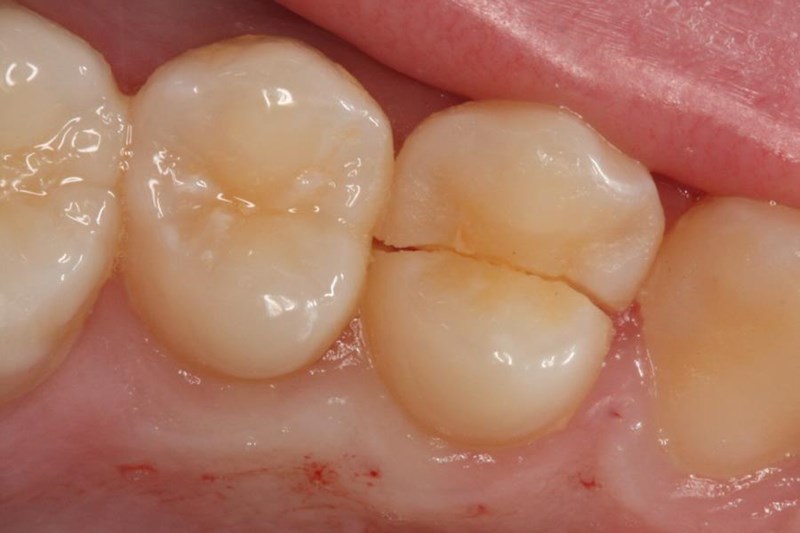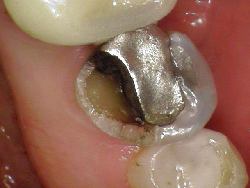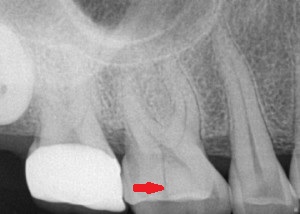
Cracked tooth syndrome relates to a variety of symptoms and signs caused by a crack in a tooth. Most cracked teeth can be saved. If a crack is located and treated early, the dentists at Drummoyne Dental Practice may be able to prevent the crack from progressing through the tooth.
The syndrome may involve:
- Teeth with large fillings or restorations where the crack runs under a weakened cusp
- Teeth with minimal or no fillings where the tooth has been subjected to heavy biting forces due to grinding
- Teeth that have suffered trauma.

Symptoms and Signs of a Cracked Tooth
- Sharp and erratic pain upon chewing or after release of biting pressure; not all cracks cause pain.
- Pain or discomfort when the crack is exposed to cold or hot food or liquids.
- Sensitivity to sweet foods
- Difficulty in pinpointing which tooth hurts or whether the pain is coming from the top or bottom tooth.
- The crack may not be visible to the eye or detectable on a dental X-ray film
- If the crack extends below the gum, a pocket of gum disease may extend along the root surface.
Causes of Cracked Tooth Syndrome
- Long-term decay or large fillings may have weakened the teeth over time, making them prone to fracture.
- Bruxism: excessive clenching or grinding of the teeth, particularly at night. Bruxism can cause teeth to crack.
- Chewing on hard foods or substances, such as ice, sweets or pencils.
- Trauma such as a blow to the teeth, especially if the upper and lower jaws have been rammed together.
Diagnosis of Cracked Tooth Syndrome
Diagnosis can be difficult because symptoms are not consistent and cracks can vary in length and location.

Diagnosis may involve the following issues:
- Examination
- Bite tests
- Probing of the gums
- X-rays
- Removal of a filling
- Staining
- Transillumination
- Temperature change
Treatment for a Cracked Tooth
Early treatment is important. Propagating cracks may be stopped or slowed down, increasing the chances that the tooth can be saved.
- Simple Crack:
The treatment for most cracked teeth involves removing the weakening cusp and placing a large filling or crown on the tooth. - Complex Crack:
If a crack has progressed to the pulp or has caused inflammation of the pulp, root canal treatment may be needed before the crown or filling is put in place.
In severe cases, the tooth may be split in half. In this case, the tooth usually has to be extracted. A bridge, denture or dental implant may then be needed.
Prevention
- If you clench your teeth or grind them together (bruxism), you can have a special night guard made to protect your teeth. The dentists at Drummoyne Dental Practice can fit you with a night guard, called an occlusal splint.
- Avoid chewing on hard objects such as ice, hard sweets, pens or pencils.
- Wear a protective mouth guard when playing contact sports.
- Practice good dental hygiene to minimise the need for fillings.
If you are in need of treatment or have any inquiries, please do not hesitate to contact Drummoyne Dental Practice at 9181 2226.